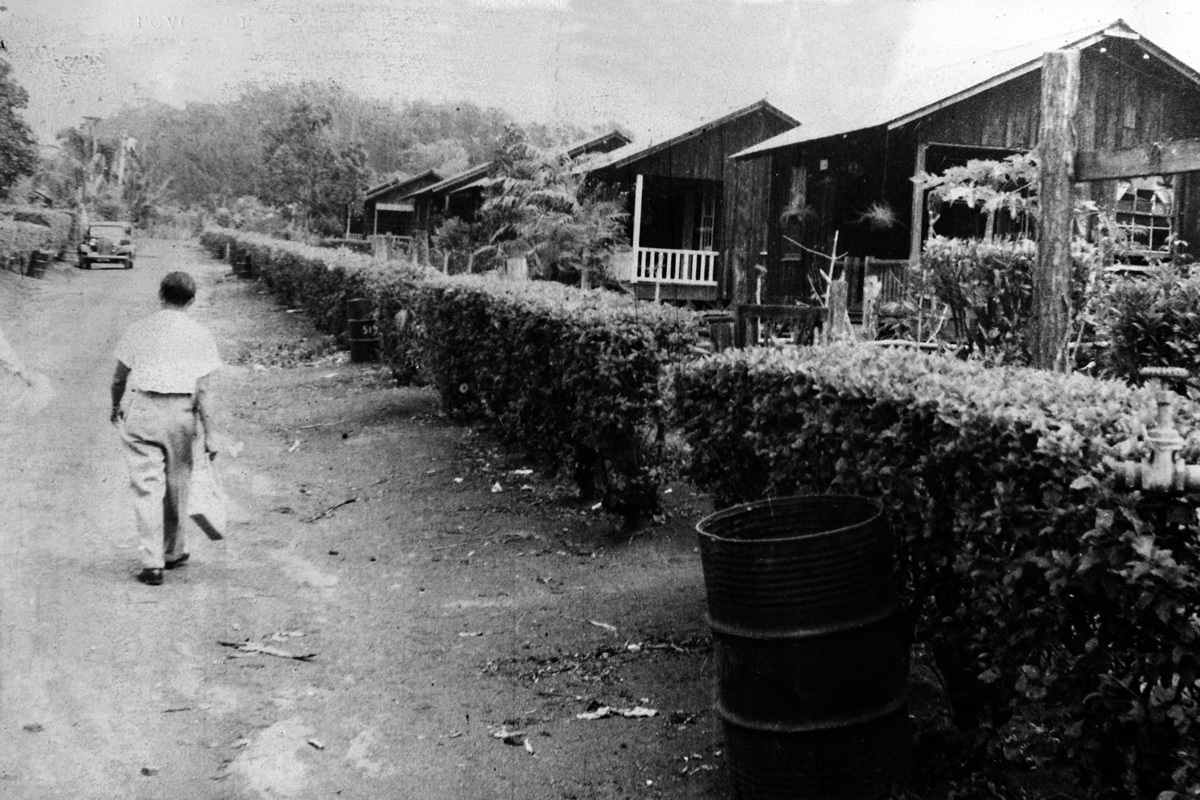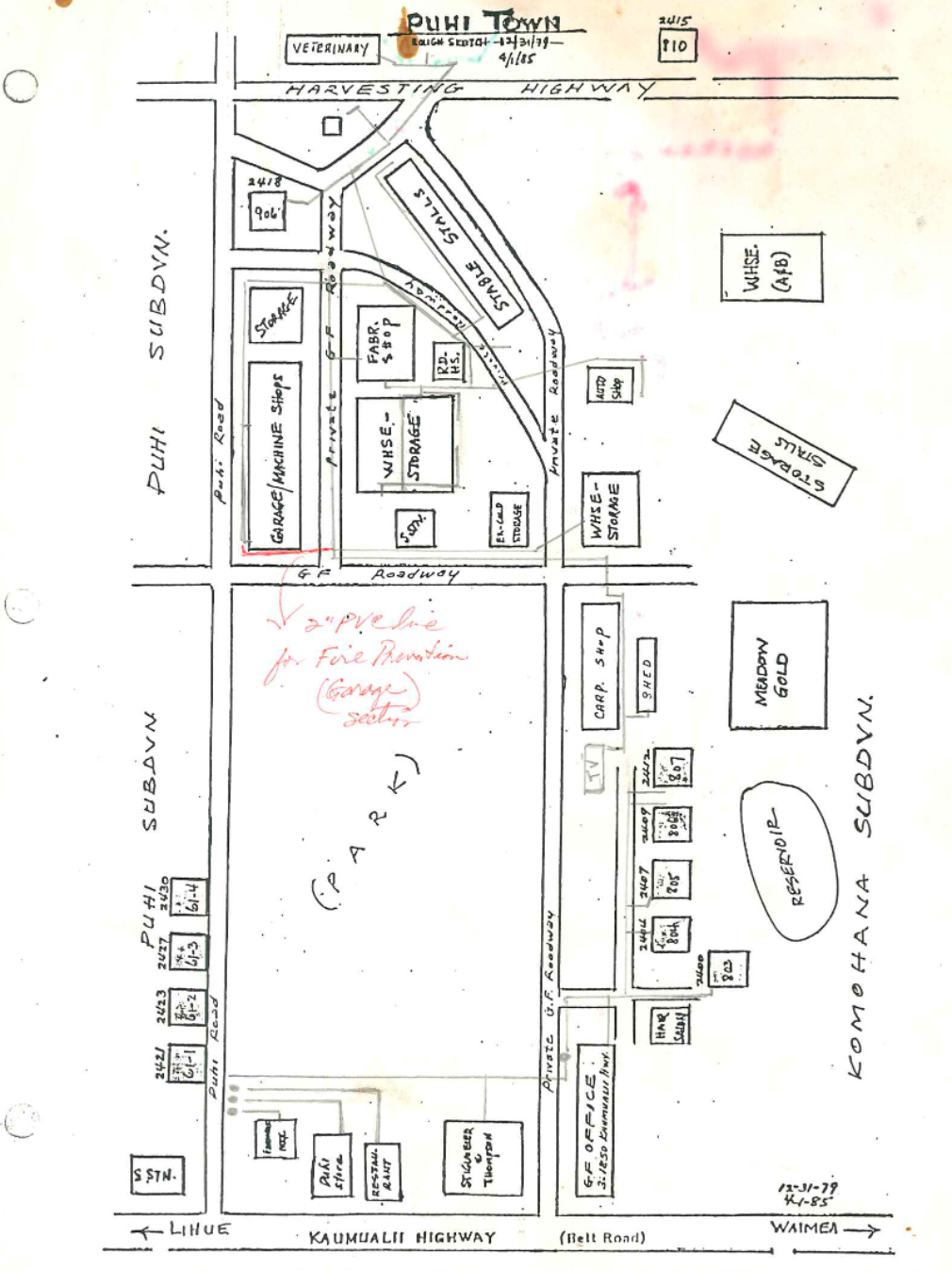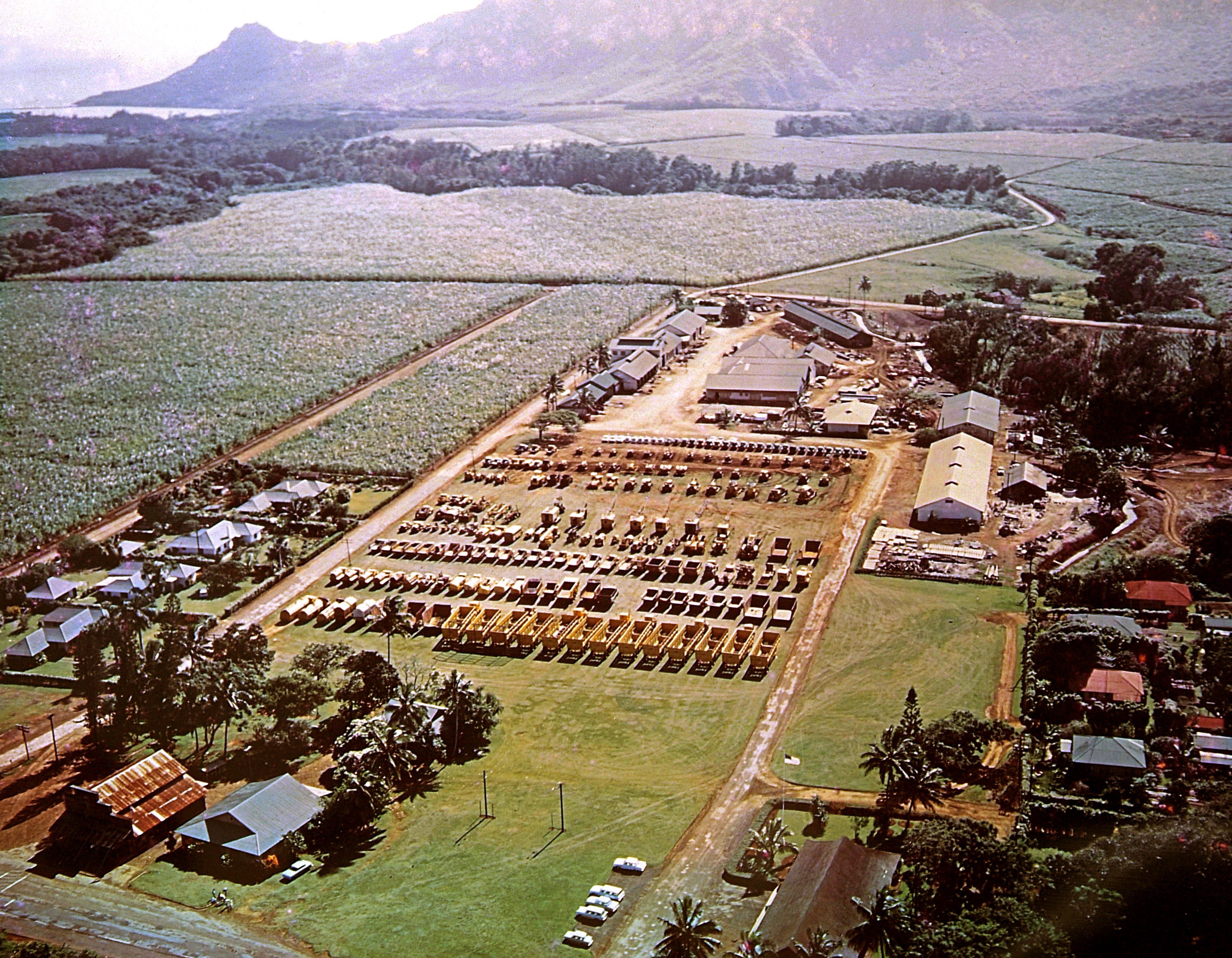The History of Puhi Park
Although previously published articles indicate that Grove Farm’s employee housing Puhi Camp (c. 1917-1980s) was built during the 1920s, newspaper accounts I’ve recently uncovered reveal activity at Puhi Camp as early as 1917.
Puhi Camp once occupied a portion of what is now the campus of Kauai Community College (KCC) and consisted of about 600 houses occupied by nearly 1,200 Grove Farm workers and their families, many of whom were immigrants from China, the Philippines, Japan, Puerto Rico and Portugal.
Its houses were constructed of milled wood and posts, or Canec, or hollow tile, all with corrugated metal roofs. Shade trees, fruit trees, hibiscus hedges and wooden fences bordered each property. Puhi Camp also contained a playground, gardens, lawns, a movie hall, three stores, a Chinese laundry, a slaughterhouse, a reservoir and a hall for social events.

A memorable social event occurred at Puhi Hall on Sept, 18, 1921, that featured a fairy dance by Miss Edith Sloggett, a vocal solo sung by Miss Harriett Tokito, musical numbers in comic makeup by the Riposa brothers, and a song and dance in Chinese costume performed by Miss Rose Marie Silva.
An orchestra with Frank Fernandez at the piano filled out the program, followed by an hour or so of dancing.

During the heyday of the sugar industry, Grove Farm’s Puhi Park served as the plantation’s lot for its impressive fleet of field equipment. The areas surrounding the park had many important components of plantation operations, including the many “shops” that housed specialty trades such as carpentry, machinery, fabrication, and auto repair. There was also an icehouse and stables. Adjacent to the park, along Kaumuali‘i Highway, was Puhi Store and heading west was the Grove Farm headquarters office.
The hand-drawn sketch below depicts the former industrial area where many of the structures are still standing today, including our Grove Farm office. In 1968, when the first of these new subdivision homes were ready for occupancy, Puhi Camp residents began moving out of Puhi Camp into the new subdivision.
And, during the 1970s, many of their former Puhi Camp houses were therefore demolished. The Puhi Camp property, along with cane field Haiku 8, and an adjoining valley area totaling 200 acres of Grove Farm land donated by Grove Farm to the state, then became available for the construction of KCC, which was dedicated in 1977.

Many of the plantation’s laborers and their families lived in Puhi Camp, which was located mauka of Kaumualiʻi Highway. Families were eventually given the opportunity to own their own homes, and plantation camp life, as they knew it, was replaced by educational centers such as the Kauaʻi Community College, Kawaikini, Pūnana Leo and Island School.
The center of plantation operations was surrounded by acres of sugarcane fields. In the 1970’s, Grove Farm converted former sugar cane fields adjacent to Puhi Road with fee simple house and lot packages that were prioritized for its employees. In fact, Grove Farm was the first plantation in the state to allow employees to buy their own homes!

As the sugar industry slowly faded, so did the fleet of heavy equipment and trucks that once served Grove Farm. Today’s Puhi Park is a green space surrounded by a community of homes, businesses, and schools. A low hollow tile wall surrounds the perimeter of the park – and Grove Farm keeps the park regularly maintained.
